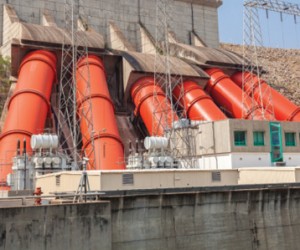Throughout Angola, Democratic Republic of Congo, Malawi, Mozambique, Namibia, Zambia and Zimbabwe widespread drought has significantly reduced the region’s ability to generate electricity.
The mining sector has been among the hardest hit by the dramatic decrease in hydropower, and unless something is done to address the need for power supply to the region’s mines, these countries and their mining companies will face further economic hardships.
To make matters worse, the annual rainy season that normally runs from October through April did not begin this year until late February. While rain will eventually fall and water levels will rise across Southern Africa, the more systemic problem of an inadequate and unreliable power infrastructure will continue to hamper the mining industry.
“The current drought has underscored the vulnerability of Southern Africa’s mining sector – and the region’s economy – with such a heavy reliance on intermittent sources of electricity such as hydropower,” said Paul Marcroft, Director of Sales Operations and Strategic Planning for APR Energy.
“A lack of reliable electricity is unacceptable in an industry where lives depend on uninterrupted power for essential processes like ventilation and dewatering,” Marcroft said. “Beyond safety, a constant flow of electricity is required so smelters don’t go cold, allowing molten metals to solidify inside extremely expensive processing equipment.”
Marcroft pointed to Zambia, Africa’s second-largest copper producer, as a microcosm of what the mining industry faces throughout the region.
“Zambia’s mines consume more than half of the country’s power and are now being charged an increased tariff for electricity, resulting in increased operational costs and decreased production,” Marcroft said. “This is leading to job losses and reduced revenues, which have significant downstream impacts on Zambia’s economy and the welfare of its people.”
Even without the drought, access to reliable electricity can be a challenge for mines, which often operate in remote locations far from the local grid system. “Mines need a solution that provides reliable power fast to ensure they can continue to operate safely and remain profitable,” Marcroft said.
Marcroft said that fast-track, turnkey power is a readily available and affordable solution for the mining sector that could eliminate vulnerability to an unreliable supply of electricity. “Unlike permanent power sources, this distributed power solution uses easily transportable modules to provide the mine with dependable and dedicated electricity when and where it is needed, in as fast as 30-90 days.”
He explained that fast-track turnkey power features state-of-the-art gas turbine technology and diesel- and gas-powered reciprocating engine generators. “These ‘pop-up’ power plants are scalable from 10-100 MW (or more) providing the
flexibility to ramp up supply based on the user’s requirements. These mobile power plants can be an ideal solution as they require minimal capital investment from the mine, which needs only to provide the land and fuel.”
In addition, the capacity can be located near demand, reducing the need for transmission and distribution infrastructure, while also cutting the power loss that occurs as electricity travels long distances across the grid, Marcroft said.






